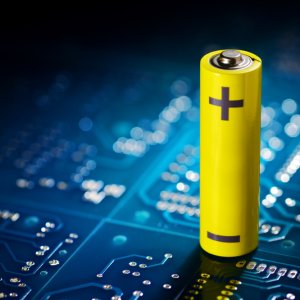
The Car of the Future Could be Developed in Mexico
 By Alfonso Núñez | Journalist & Industry Analyst -
Wed, 03/23/2022 - 15:04
By Alfonso Núñez | Journalist & Industry Analyst -
Wed, 03/23/2022 - 15:04
Once considered the “car of the future,” electric vehicles (EV) are now a reality and are becoming increasingly popular among consumers, manufacturers and governments looking to reduce carbon emissions in transportation. While Mexican adoption of EVs has lagged behind for numerous reasons, industry experts believe that with the proper handling by the public and private sector the electromobility transformation can catch up.
Infrastructure challenges stand in the way of the adoption of EVs by Mexicans. “Mexico is lagging behind in electric transportation infrastructure. The country committed at COP to stop producing ICE vehicles by 2040, so time is short. The main issue is coordination… authorities have to lead in this area because the transition involves numerous issues such as the implementation of public policy,” said José Zozaya, Executive President, AMIA.
The country has only 2,100 electric chargers while the US has 42,500, making EVs an inconvenient option for the everyday driver. Furthermore, the lack of governmental regulation and collaboration between the public and private sectors blocks Mexico’s EV future, explained Zozaya.
Fiscal incentives could boost the adoption of EV across Mexico and change the current perception that these are “luxury vehicles.” However, these credits have to be carefully developed and applied. For example, the fiscal incentives proposed by US President Joe Biden for the acquisition of EVs have been harshly criticized by both the Mexican industry and government due to their alleged discriminatory nature. These credits would only benefit US-union made EVs, going against the USMCA.
Automakers have already played an undeniable role in widening access to EVs, advancing the country closer towards an electromobility transformation despite infrastructure and regulatory challenges. However, misinformation regarding the current status of this transformation could end up being another challenge to its further progression. “There is a general perception that Mexico is lagging behind in electric transportation alternatives. Nothing is further from the truth. Mexico is already on the path toward electric mobility,” said José Arturo Zapata, CEO Corporación Zapata.
Zapata pointed toward JAC’s EV model that is available in Mexico for MX$450,000 (US$22,282) and has allowed the Chinese company to become a leader in EV sales in the country. Other players are jumping in the electromobility train. Tesla’s EV rideshare platform Beat has 230 vehicles providing transportation services in Mexico City while retail giant Liverpool purchased 15 fully electric vans for last mile distribution services and has already ordered another 20. Liverpool uses EV to capitalize on the boom of e-commerce and last mile logistics the country has experienced since the start of the pandemic, but electric bus adaptation presents challenges of its own, explains Felipe Gallego, COO and CTO, Megaflux Electric Drivetrains.
A common challenge companies face when adopting EVs is the lack of the proper infrastructure to charge them. “Now you have to think about installing 10-20-50 chargers on your facilities, consuming megawatts of power that might not be able to be recouped. The infrastructure might not be ready. It is not just about accessing a vehicle; it's about being ready to use it,” said Gallego.
Another trend influencing the car of the future is the use of autonomous technologies, which could greatly reduce road accidents. However, Mexican roads are highly different from those in countries where these technologies are already being implemented. Driver behavior also plays a role. Drivers in areas that use autonomous driving often travel different distances on average and do so with different behaviors, meaning that Mexico must develop autonomous technology of its own. “We have to create vehicles that are suited for our market so we can ease the adoption,” said Gallego.
Industry leaders are excited about the opportunities on the horizon, found KPMG’s 22nd survey of the auto industry worldwide. But as with any transformation, there will be losers and winners, said Marco Galindo, Aguascalientes Managing Partner, KPMG. For that reason, rapidly taking immediate executive decisions is even more critical.
“Nowadays, the political pressure on companies to implement ESG and decarbonization strategies is transforming the automotive business,” said Galindo.
Mexico is one of the global leaders of ICE vehicle manufacturing but automakers have to be prepared to switch gears if they wish to continue with this momentum as market demand shifts from ICE models to EVs. There is a great difference between the manufacturing and components needed for each, meaning some plants must begin preparing for almost entirely different processes. However, now is the right time to take action as Mexico has an opportunity to become a leader in EV manufacturing and supply the car of the future to international markets.
















